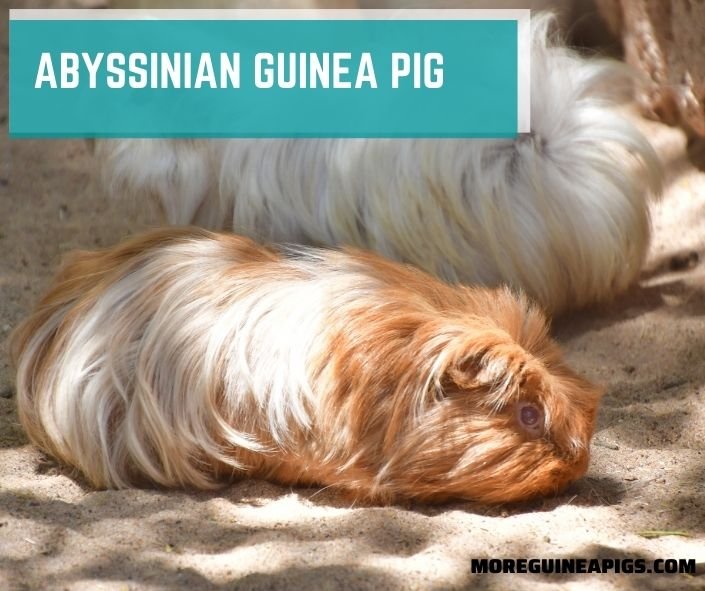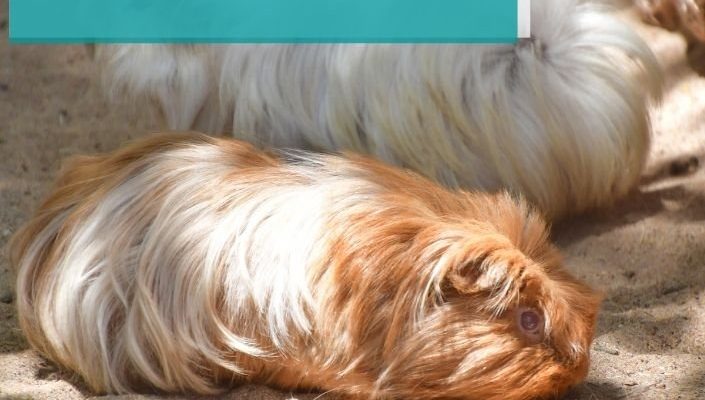
Abyssinians, with their unique rosettes and vibrant personalities, require a little extra attention in the grooming department. But don’t worry! Grooming doesn’t have to be a chore. It can actually be a bonding experience that makes your relationship stronger. Here’s a guide to help you navigate the delightful world of guinea pig grooming.
Understanding the Abyssinian Coat
Before diving into grooming tips, let’s talk about what makes the Abyssinian coat so special. Their fur is short, wiry, and arranged in adorable rosettes—think of these as little tufts of fluff that stick up in various directions. This unique coat type not only gives them their distinctive look but also influences how you care for them.
You might be wondering why grooming is so essential for Abyssinians. Well, their rosettes can easily trap dirt and debris, leading to matting if not maintained properly. Regular grooming helps keep their coat clean and free from tangles, making it feel soft and healthy. It’s like keeping your favorite sweater clean—who wants to wear something scratchy and dirty?
Tools You’ll Need
Just like a chef needs the right kitchen tools, you’ll need a few supplies to keep your Abyssinian looking its best. Gathering your grooming toolkit ahead of time will make the process smoother and more enjoyable for both you and your piggy. Here’s what you’ll need:
- Soft-bristle brush: A gentle brush will help remove loose hair without irritating their skin.
- Wide-toothed comb: Perfect for detangling any knots without causing pain.
- Nail clippers: Guinea pigs need regular nail trims to prevent discomfort.
- Pet-safe shampoo: In case your piggy gets into something messy, a gentle shampoo is a must.
- Soft towels: For drying after baths or cleaning up any spills.
Having these tools at hand means you’ll be ready for anything—be it a quick brush or a more thorough grooming session. You can think of this as assembling your own little spa kit for your guinea pig.
Regular Brushing Techniques
Brushing your Abyssinian is crucial because it keeps their coat healthy and looking tidy. Aim to brush them at least once a week. Here’s a simple technique to follow:
1. Start Slowly: Begin by letting your guinea pig sniff the brush. This helps them get used to the idea.
2. Gentle Strokes: Use long, gentle strokes in the direction of their fur growth. Pay special attention to their rosettes, where dirt can accumulate.
3. Watch for Tangles: If you encounter a tangle, use your fingers to gently work it out before using the comb. This avoids pulling on their skin and causing discomfort.
4. Make it a Bonding Ritual: Try turning grooming into a special time, perhaps while listening to music. Your Abyssinian will appreciate the pampering!
Brushing not only removes loose fur and dirt but also helps distribute natural oils, keeping their coat shiny and healthy.
Bathe Your Guinea Pig Carefully
Now, you might be thinking, “Do I really need to bathe my guinea pig?” The short answer is: not often! Abyssinians usually stay clean on their own. However, if they get particularly dirty, a bath might be necessary.
When you do bathe your guinea pig, here’s how to do it right:
1. Choose the Right Time: Pick a calm day when your guinea pig isn’t feeling stressed. You want them to be relaxed!
2. Use Warm Water: Fill a basin with a few inches of warm water. Make sure it’s not too hot—around lukewarm is perfect.
3. Apply Shampoo Sparingly: Use a small amount of pet-safe shampoo, lathering it gently in their fur. Avoid their eyes, as soap can sting.
4. Rinse Thoroughly: Rinse with warm water, ensuring no shampoo residue remains. It’s like washing your hands—you want to make sure all the soap goes down the drain!
5. Dry Gently: After the bath, wrap your guinea pig in a soft towel and gently pat them dry. Avoid heat sources; they can be sensitive.
Bathe them only when absolutely necessary, as over-bathing can strip their fur of essential oils and lead to skin issues.
Nail Trimming Tips
Keeping your guinea pig’s nails trimmed is essential for their health and comfort. Overgrown nails can make walking painful and lead to infections. Here’s how to approach nail trimming:
1. Get Comfortable: Ensure both you and your piggy are calm. Sit in a cozy spot and hold your guinea pig on your lap.
2. Identify the Quick: Look for the pink area in the nail, called the quick. This part contains blood vessels and nerves, so you’ll want to avoid cutting into it.
3. Use Sharp Clippers: Make clean cuts with nail clippers designed for small animals. If your guinea pig squirms, take a break and try again later. It’s better to take it slow.
4. Reward Them: After trimming, give your piggy a treat! This creates positive associations with the process, making it easier next time.
Regular nail trimming, ideally every 4–6 weeks, helps keep your guinea pig’s feet healthy and pain-free.
Maintaining Their Living Environment
Grooming isn’t just about brushing and bathing; it also involves maintaining a clean living environment. A tidy space keeps your guinea pig healthy and reduces stress. Here’s how to keep their habitat sparkling:
1. Daily Spot Cleaning: Remove any soiled bedding or uneaten food every day. This helps prevent odors and keeps your piggy safe from bacteria.
2. Change Bedding Weekly: Completely replace their bedding regularly, ensuring it’s safe and absorbent. Aspen shavings or paper-based bedding are great options.
3. Disinfect the Cage: Once a month, clean the cage with pet-safe disinfectants. Rinse well and let it dry before adding fresh bedding.
4. Provide Safe Hiding Spots: Guinea pigs love having cozy areas to hide. Make sure their cage has tunnels or hideaways for comfort.
By keeping their space clean, you’ll not only help your guinea pig stay healthy but also make them feel like they have their own little sanctuary.
Recognizing Grooming-related Health Issues
As you get into the groove of grooming, it’s important to keep an eye out for any health issues. Here are some signs to watch for:
1. Excessive Shedding: If your guinea pig is shedding a lot, it could be a sign of stress, poor diet, or skin issues.
2. Matting or Dirt Buildup: If you notice sticky mats on their coat, it’s time to tread carefully and perhaps consult a vet.
3. Inactivity or Discomfort: If your guinea pig seems less active or is avoiding movement, it might be an issue with their nails or feet.
4. Skin Irritation: Look for red spots, rashes, or bald patches. These could indicate allergies or mites, and it’s best to get them checked out.
Being vigilant about your guinea pig’s grooming needs not only enhances their appearance but also helps catch potential health issues early on.
In conclusion, grooming your Abyssinian Guinea Pig is a rewarding experience that strengthens your bond while ensuring their health and happiness. By following these tips and maintaining a clean environment, you’ll create a loving space for your furry friend. So grab that brush, and get ready to pamper your piggy! After all, a happy guinea pig means a happy you.

